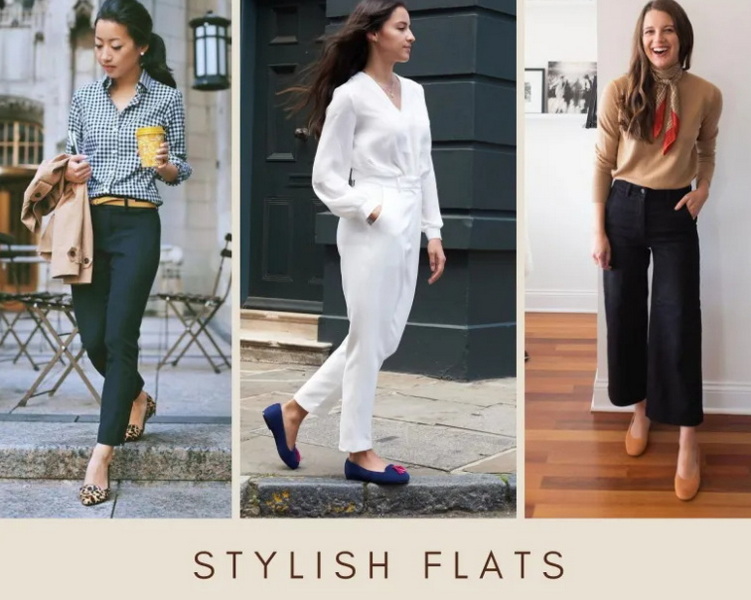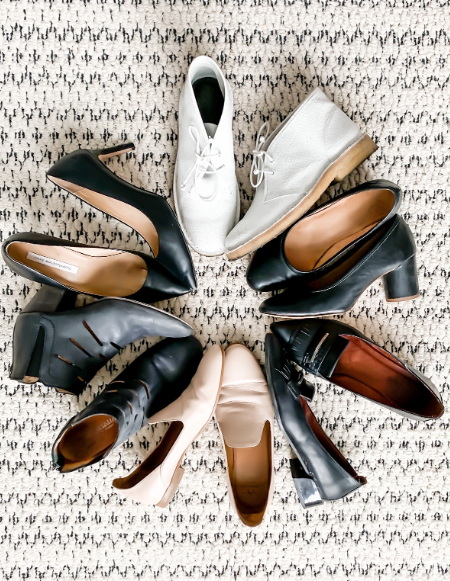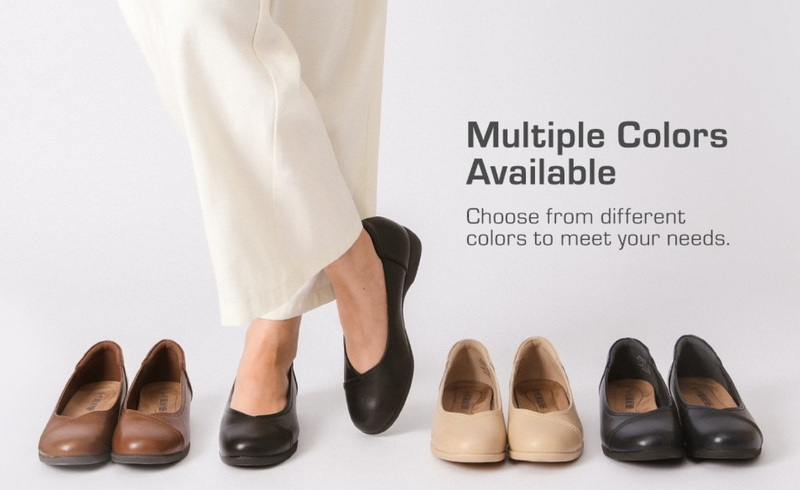Content Menu
● The Importance of Proper Work Shoes
● Comfortable and Stylish Options for Professional Women
>> 1. Classic Pumps
>> 2. Sophisticated Flats
>> 3. Versatile Ankle Boots
>> 4. Elegant Slingbacks
>> 5. Professional Wedges
● Matching Shoes to Your Office Dress Code
>> Business Formal
>> Business Casual
>> Creative or Relaxed Offices
● Comfort Features to Look For
● Styling Tips for Work Shoes
● Best Brands for Women's Work Shoes
● Caring for Your Work Shoes
● Addressing Common Foot Issues
>> Bunions
>> Plantar Fasciitis
>> Heel Pain
● Seasonal Considerations
>> Summer
>> Winter
● Investing in Quality
● Breaking in New Work Shoes
● Conclusion
● FAQ
>> 1. Can I wear open-toe shoes to the office?
>> 2. How high should my heels be for work?
>> 3. Are sneakers ever appropriate for the office?
>> 4. How often should I replace my work shoes?
>> 5. What's the best way to deal with foot odor in work shoes?
When it comes to dressing for success in the workplace, choosing the right footwear is crucial for women. The perfect pair of work shoes not only complements your professional attire but also provides comfort and support throughout the day. In this comprehensive guide, we'll explore the best shoes for women to wear to work, covering various styles, comfort factors, and how to match them with different office dress codes.

The Importance of Proper Work Shoes
Selecting appropriate footwear for the office is about more than just looking good. The right shoes can boost your confidence, enhance your productivity, and protect your feet during long hours at work. Let's delve into the key factors to consider when choosing work shoes and explore some of the best options available.
Comfortable and Stylish Options for Professional Women
1. Classic Pumps
Pumps are a timeless choice for professional women. Opt for a pair with a low to medium heel height (2-3 inches) for comfort and stability. Look for styles with cushioned insoles and a slightly rounded or almond-shaped toe for a modern yet classic look.
2. Sophisticated Flats
Ballet flats and loafers are excellent choices for women who prefer flat shoes. They offer comfort and ease of movement while maintaining a polished appearance. Choose leather or suede options for a more upscale look.
3. Versatile Ankle Boots
Ankle boots are perfect for transitioning between seasons and can be paired with both pants and skirts. Opt for a low heel and a sleek design to keep the look professional.
4. Elegant Slingbacks
Slingbacks offer a nice balance between pumps and open-toe shoes. They provide more coverage than sandals while still allowing your feet to breathe. Choose a kitten heel or block heel for added comfort.
5. Professional Wedges
Wedges can provide height and comfort simultaneously. Look for styles with a modest heel height and a neutral color palette to maintain a professional appearance.
Matching Shoes to Your Office Dress Code
Business Formal
For a business formal environment, stick to classic closed-toe pumps or sophisticated flats in neutral colors like black, navy, or nude. Avoid overly embellished styles or extreme heel heights.
Business Casual
Business casual allows for more flexibility. You can incorporate ankle boots, low wedges, and even dressy loafers into your wardrobe. Experiment with colors and textures while maintaining a polished look.
Creative or Relaxed Offices
In more relaxed work environments, you have the freedom to express your personal style. Consider stylish sneakers, colorful flats, or trendy mules, ensuring they're clean and well-maintained.
Comfort Features to Look For
When selecting work shoes, prioritize comfort to ensure you can wear them all day without discomfort. Look for these features:
- Cushioned insoles
- Arch support
- Breathable materials
- Flexible soles
- Wide toe boxes
Styling Tips for Work Shoes
Here are some tips to help you style your work shoes effectively:
1. Coordinate your shoe color with your outfit or accessories for a cohesive look.
2. Consider the length of your pants or skirts when choosing heel heights.
3. Invest in quality shoe care products to maintain the appearance of your work shoes.
4. Rotate your shoes regularly to extend their lifespan and give your feet variety.

Best Brands for Women's Work Shoes
Several brands are known for producing high-quality, comfortable work shoes for women. Some top choices include:
1. YingHua
2. Naturalizer
3. Cole Haan
4. Sam Edelman
5. Everlane
6. Rothy's
7. M.Gemi
These brands offer a range of styles that combine comfort, durability, and professional aesthetics.
Caring for Your Work Shoes
To ensure your work shoes last longer and maintain their appearance:
- Clean and polish leather shoes regularly
- Use shoe trees to maintain shape
- Apply water-repellent spray to protect against stains
- Rotate your shoes to allow them to air out between wears
Addressing Common Foot Issues
Many women experience foot problems due to ill-fitting or unsupportive work shoes. Here are some common issues and how to address them:
Bunions
Choose shoes with a wide toe box and avoid high heels that put pressure on the front of the foot.
Plantar Fasciitis
Look for shoes with excellent arch support and cushioning in the heel area.
Heel Pain
Opt for shoes with shock-absorbing soles and avoid completely flat shoes or very high heels.
Seasonal Considerations
Summer
In warmer months, consider breathable materials like leather or canvas. Peep-toe pumps or slingbacks can be appropriate in some office settings.
Winter
For colder weather, ankle boots or knee-high boots (if appropriate for your workplace) can provide warmth and style. Ensure they have non-slip soles for wet or icy conditions.
Investing in Quality
While it may be tempting to opt for cheaper shoes, investing in high-quality work footwear can save you money in the long run. Quality shoes:
- Last longer
- Provide better support and comfort
- Maintain their appearance better
- Can often be repaired rather than replaced
Breaking in New Work Shoes
When you get a new pair of work shoes, it's essential to break them in gradually to avoid discomfort and blisters. Here are some tips:
1. Wear them around the house for short periods before wearing them to work.
2. Use moleskin or bandages on areas prone to blisters.
3. Stretch leather shoes with a shoe stretcher if needed.
4. Consider using shoe stretching spray for a more comfortable fit.
Conclusion
Choosing the right shoes for work is an important decision that can impact your comfort, productivity, and professional image. By considering factors such as your office dress code, comfort features, and personal style, you can find the perfect pair of work shoes that will serve you well throughout your career. Remember to invest in quality, care for your shoes properly, and prioritize comfort without sacrificing style. With the right footwear, you'll be ready to put your best foot forward in any professional setting.

FAQ
1. Can I wear open-toe shoes to the office?
The appropriateness of open-toe shoes depends on your workplace dress code. In more conservative environments, it's best to avoid them. However, in business casual or creative settings, peep-toe pumps or sophisticated sandals may be acceptable. Always err on the side of caution and observe what your colleagues and superiors wear.
2. How high should my heels be for work?
For most professional environments, it's best to keep heel heights between 2-3 inches. This provides a polished look without sacrificing comfort or stability. If you're comfortable in higher heels and your workplace allows it, you can go up to 4 inches, but be sure you can walk and stand comfortably throughout the day.
3. Are sneakers ever appropriate for the office?
In some modern, casual workplaces, sneakers can be appropriate if they're clean, stylish, and not overly sporty. Leather or suede sneakers in neutral colors are more likely to be acceptable. However, always check your company's dress code and observe what others in your position wear before incorporating sneakers into your work wardrobe.
4. How often should I replace my work shoes?
The lifespan of work shoes depends on factors like quality, frequency of wear, and how well you maintain them. On average, you should consider replacing your work shoes every 8-12 months if worn regularly. Signs that it's time for a new pair include worn-out soles, visible damage, or decreased comfort and support.
5. What's the best way to deal with foot odor in work shoes?
To combat foot odor in work shoes, try these methods: use moisture-wicking socks, sprinkle baking soda or use odor-absorbing insoles in your shoes overnight, alternate between different pairs of shoes to allow them to dry completely between wears, and use antibacterial sprays designed for shoes. If the problem persists, consider seeing a podiatrist for professional advice.

















